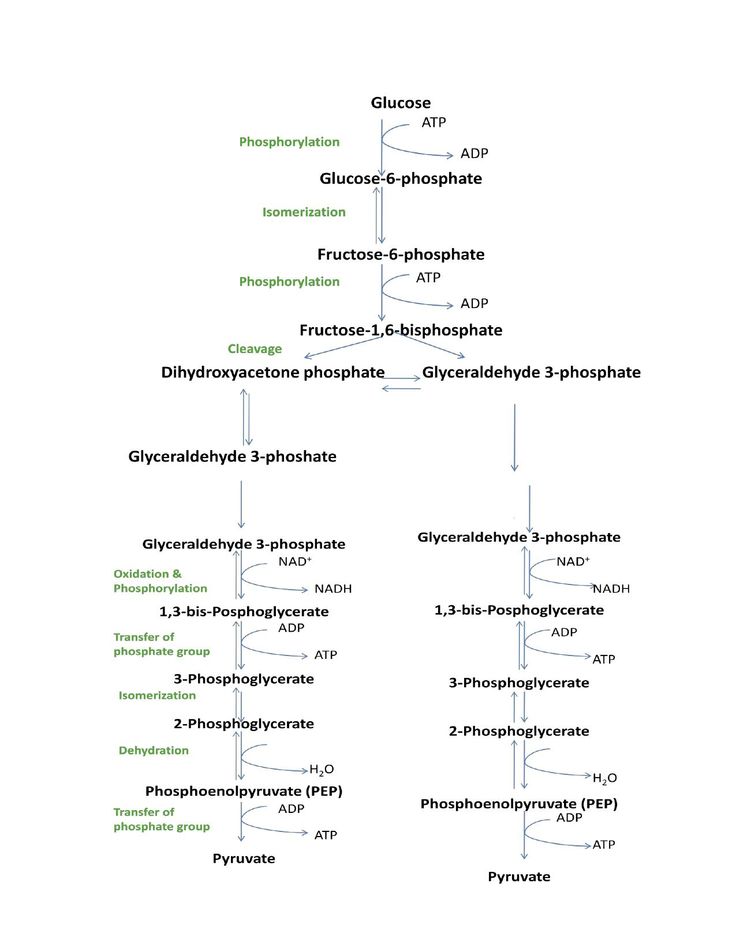2 Atp Is Produced
Thus for NADH 10425 ATP is produced actually. These ATP yields are theoretical.

Another Depiction Of The Etc Nadh Process About 3 Atp While Fadh2 Produces 2 Atp Produces Less Because It App Electron Transport Chain Electrons Mitochondria
Most of the ATP produced by aerobic cellular respiration is made by oxidative phosphorylation.

2 atp is produced. 4 Water molecules are split. A net of two ATP molecules are produced through glycolysis two are used during the process and four are produced Learn more about the 10 steps of glycolysis below. Krebs Cycle 2 ATP 3.
Glycolysis 2 ATP 2. The free energy released in this process is used to form the high-energy molecules adenosine triphosphate ATP and reduced nicotinamide adenine dinucleotide NADH. 4 protons via complex 14 via complex 3 and 2 via complex 4.
Glycolysis 2 ATP 2. Glycolysis produces only 2 ATP molecules but somewhere between 30 and 36 ATPs are produced by the oxidative phosphorylation of the 10 NADH and 2 succinate molecules made by converting one molecule of glucose to carbon dioxide and water while each cycle of beta oxidation of a fatty acid yields about 14 ATPs. These two molecules go on to stage II of cellular respiration.
As glycolysis proceeds energy is released and the energy is used to make four molecules of ATP. During glycolysis glucose ultimately breaks down into pyruvate and energy. This works by the energy released in the consumption of pyruvate being used to create a chemiosmotic potential by pumping protons across a membrane.
ATP is an important molecule in metabolism as it holds a lot of energy which is used in many metabolic processes. 5 Glucose is produced. This is in sharp contrast to the 32 molecules from cellular respiration.
Glycolysis is a sequence of ten reactions catalyzed by enzymes. The energy to split glucose is provided by two molecules of ATP. The ATP molecule is used for many purposes.
How Many ATPs are Produced in Alcoholic Fermentation. In fermentation each glucose passing through glycolysis yields two ATP molecules and the production of different final products depending on the microbial species. To pass the electrons from NADH to last Oxygen acceptortotal of 10 protons are transported from matrix to inter mitochondrial membrane.
Anaerobic respiration consists of two steps. Fermentation Total 2 ATP. Aerobic respiration consists of three steps.
Citation needed In practice it is closer to 14 ATP for a full oxidation cycle as the theoretical yield is not attained - it is generally closer to 25 ATP per NADH molecule produced 15 ATP for each FADH 2 molecule produced and this equates to 10 ATP per cycle of the TCA citation needed according to the PO ratio broken down as follows. In Alcoholic fermentation one mole of glucose is converted to two moles of ethanol two moles of carbon dioxide producing two moles of ATP in the process. High energy electrons move along the thylakoid membrane from photosystem I to photosystem II.
Hence the total ATPs produced in an aerobic respiration is 2 2 32 36. Two ATPs are produced in Alcohol Fermentation. 2 ATP is produced 3 The electrons from photosystem II are replaced.
Therefore 2 ATP are produced in fermentation mainly in the glycolysis process. Glycolysis is the metabolic pathway that converts glucose C 6 H 12 O 6 into pyruvic acid CH 3 COCOOH. Glycolysis does not require oxygen and can occur under aerobic and anaerobic conditions.
Aerobic respiration is much more efficient and can produce up to 38 ATP with a single molecule of glucose. Anaerobic respiration makes a total of 2 ATP. Step 1 The enzyme hexokinase phosphorylates or adds a phosphate group to glucose in a cells cytoplasm.
As a result there is a net gain of two ATP molecules during glycolysis. Final product is lactate along with the production of two ATP molecules. Similarly for 1 FADH2 6 protons are moved so 64 15 ATP is produced.
Glycolysis is a metabolic pathway that does not require oxygen. A total of 2 ATP is derived in the process Glucose 2 NAD 2 ADP 2 Pi -- 2 Pyruvate 2 NADH 2 H 2 ATP 2. 2 is converted to more ATP through an electron transport chain with oxygen as the terminal electron acceptor.
The overall reaction for glycolysis is. This type of glycolysis takes place in the absence of oxygen. Glucose 6C 2 NAD 2 ADP 2 inorganic phosphates Pi yields 2 pyruvate 3C 2 NADH 2 H 2 net ATP.

Respiration L Production Of Atp Science Biology Study Smarter Biochemistry

Chemiosmosis Definition Functions Examples Biology Humor Biotechnology Lessons Biochemistry

Chemiosmosis Is The Source Of The Atp Produced In Photophosphorylation Plasma Membrane Plasma Membrane Membrane Plasma

This Figure Shows The Different Steps In Which Carbohydrates Are Metabolized And Lists The Number Of Atp Molecul Biochemistry Anatomy And Physiology Physiology

This Flowchart Shows The Processes Of Anaerobic And Aerobic Respiration The Top Image Shows The Energy Consumin Physiology Anatomy And Physiology Biochemistry

Calvin Cycle Worksheets Biology Notes Biology Lessons Teaching Biology

Khan Academy Cellular Respiration Cellular Respiration Biology Oxidative Phosphorylation

4 15 Na K Pump Make Flash Cards Biochemistry Notes Plasma Membrane

There Are Two Important Ways A Cell Can Harvest Energy From Food Fermentation And Cel Cell Respiration Photosynthesis And Cellular Respiration Chemical Energy

Posting Komentar untuk "2 Atp Is Produced"